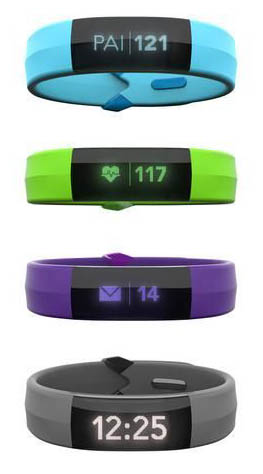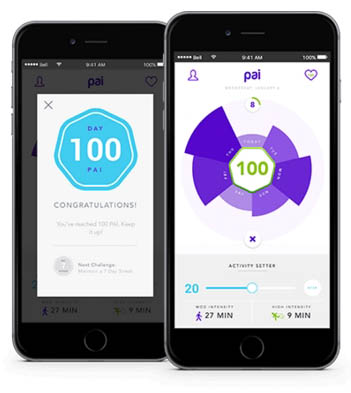A new fitness gadget from Mio – Mio Slice
We saw a lot of fitness wearables in 2015. While some looked clunky and ugly, others were just pretty and without usability. One of the most common problems with fitness wearables today is that they do not provide a clear sense of purpose for wearing one.
Think about this, what can you derive from the data your band collects about your steps or the pace of your heartbeat? Not much – unless you knew what to do with it. Data in its raw form is waiting to be interpreted; to be adapted by its user into more meaningful forms like a workout schedule or a diet program and let’s be honest that crunching numbers aren’t simple. Wearable company Mio might have a solution.
Mio’s latest wearable gadget, the Mio Slice, was recently showcased in the Consumer Electronics Show (CES) 2016. Watch the video below. The device is beautiful and slimmer than its predecessors, but it is its patent pending PAI (Personal Activity Intelligence) – Mio’s new fitness tracking metric, that steals the show.
But, before PAI, let’s talk about the new Mio Slice.

Mio Slice, how it will look.
Design
The Slice has a smaller profile compared to Mio’s bulky wearables presently in the market, and it looks great. Its curved display and connected bands are designed so as to perfectly contour your wrist and look like an actual band from sideways. While the display is monochromatic LCD from what appears in the mock-ups, the white-spaces are of the same hue as the bands, allowing the texts to pop out from the otherwise uni-coloured band and display. Present prototypes also have a large physical button at the bottom of the screen.
Mio hasn’t given many details on its specs as yet, so we don’t know about the types of sensors it carries inside, but what was visible was the heart rate sensor on the back of the display. Mio says that this is their first in-house designed optical HR monitor, and it is accurate enough for all-day heart rate monitoring, including sleep monitoring.
Slice would be available in 4 different colours, and since the band and screen are the same colour, we do not know if the bands will be interchangeable.
App

Mio PAI
For its previous wearables, Mio Go, Mio’s native app, provided syncing capabilities with a mobile device. While that app continues to be available on Android as well as iOS, the company has launched a new app called Mio PAI. PAI is a new metric developed by Mio that focuses on improving and maintaining your cardiovascular health. According to Mio, the daily 10,000 steps requirement to stay healthy is not credible.
Those steps counted do not account for heavy tasks vs. light tasks; even casual walking adds to steps but in reality, it does not add much to health. On the other hand, your heart rate responds to every activity you undertake and the intensity of your activity. PAI takes into account your resting heart rate, maximum, and normal heart rate to base your PAI score. You must keep your PAI at least 100 to achieve the maximum benefits of your cardiovascular workout. PAI is calculated in real-time on previous 7-day records.
The PAI app has already been launched on Android and iOS platforms, and it is also compatible with older Mio devices as well. Although, it appears to be pretty rough judging from the negative user reviews. But, that can improve with time and given that the Slice has not launched yet, it is not a big issue.
Okay, but what is PAI? PAI has been derived based on the analysis done on the data made available from The Nord-Trøndelag Health Study, aka The HUNT study. HUNT has carried out many extensive studies ranging over many years and including thousands of participants to help studies relating to human health. This particular study has collected data from over 60,000 participants over a 20 year period.
The data from HUNT studies are considered reliable amongst research communities, but little is known how Mio used this data to arrive at their PAI algorithm. But this should not be a cause of any unwanted scepticism. Compared to Samsung’s gear fit’s unhelpful and plain data logging, at least we have a fitness band that provides a simple measurement of health.
How should you carry out your workout? Well, it is simple. Mio says you can do any activity you like as long as it is intense to make your heart beat faster. So what if the Slice can’t track your swimming or weight lifting activities? That is the whole point of PAI, that it doesn’t matter what kind of activity you are doing, just race your heart to keep it healthy.
Video
Here is Techy Agents Hands On video from CES 2016:
Where to get it
What is your thought on the Mio Slice? Write your comments below.



